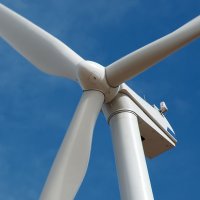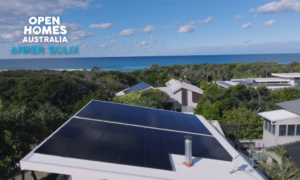A surprise discovery by a group of researchers from the U.S. Department of Energy’s (DOE’s) Argonne National Laboratory could potentially save the global wind power industry millions each year in maintenance costs.
The stresses placed on key components such as actuators, bearings and gears housed in wind turbine drivetrains are a major factor in driving up the cost of wind energy. These components suffer tribological (the science of interactive surfaces in motion) failures due to a phenomenon called micropitting, in which repeated rolling and sliding of gears and bearings leads to cracks in turbine drivetrains.
Undetected micropitting can cause wind turbines to seize and breakdown, leading to costly repairs.
Accordingly, the wind sector is seeking engineering solutions which could alter the surface properties of drivetrain components to prevent these tribological failures.
In what they called a serendipitous finding, the team from Argonne’s Tribology and Thermal-Mechanics Section applied a new “diamond-like” coating originally developed for reducing friction and lubricating sliding metallic surfaces, to wind turbine drive trains.
The results were unexpected, to say the least.
“We felt that if it was working under other sliding conditions, it might work in wind turbine drivetrains as well,” said Ali Erdemir, from the Section’s Surface and Lubrication Interaction, Discovery and Engineering (SLIDE) initiative. “Initially, our expectations were low, as we thought the coating would wear out due to the high stresses inherent in wind turbines, but that didn’t happen.”
Prolonging the life of these components could greatly reduce the cost of wind power, the fastest growing source of energy in the world, thereby making it an even more attractive energy source.
The coating – diamond-like, due the attributes of the carbon-to-carbon bonding of its molecules – is named N3FC, and, exceeding Argonne’s laboratory limits, has so far endured over 100 million testing cycles with no appreciable micropitting.
Erdemir said that if the coating performs equally as well in real-world conditions, it would save the wind power industry hundreds of millions in turbine maintenance costs.
According to Argonne, the team is now ready to approach private wind developers and test N3FC in the field – as soon as they can discover why the coating actually works.
“We don’t yet understand the exact mechanism, said Erdemir. “The general belief is that component wear life extension requires a much harder coating, as more hardness reduces wear. But in this case the coating has less hardness than the base steel, so conventional thought doesn’t apply.”














































